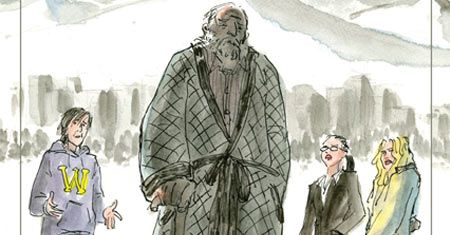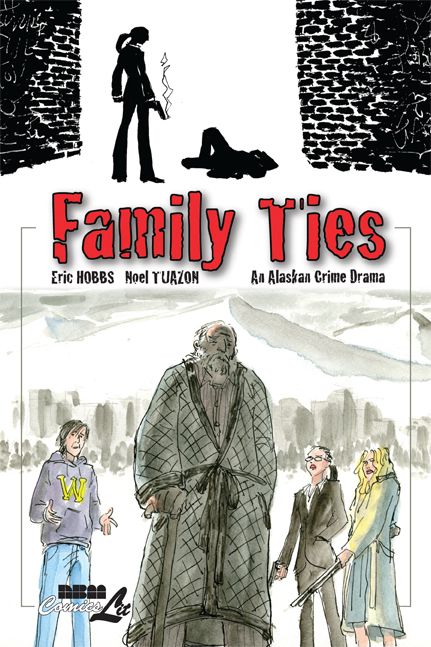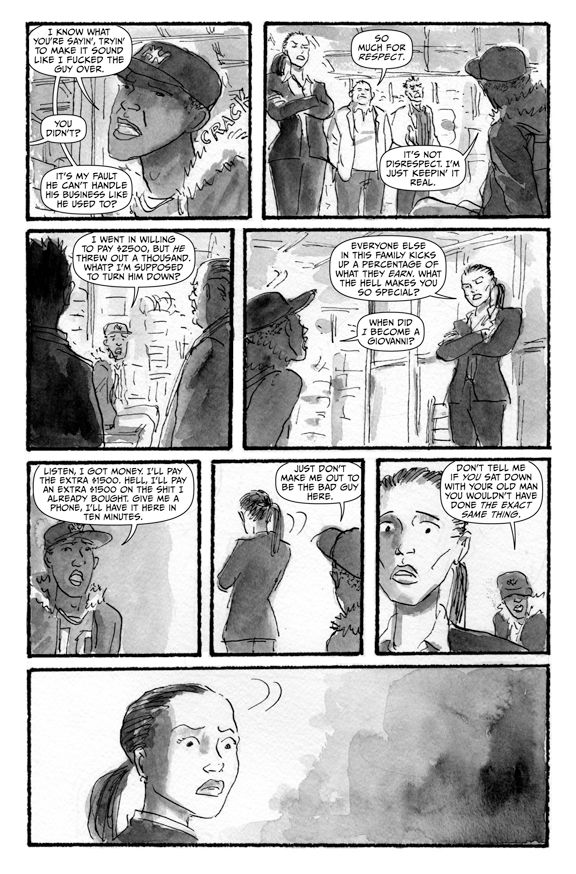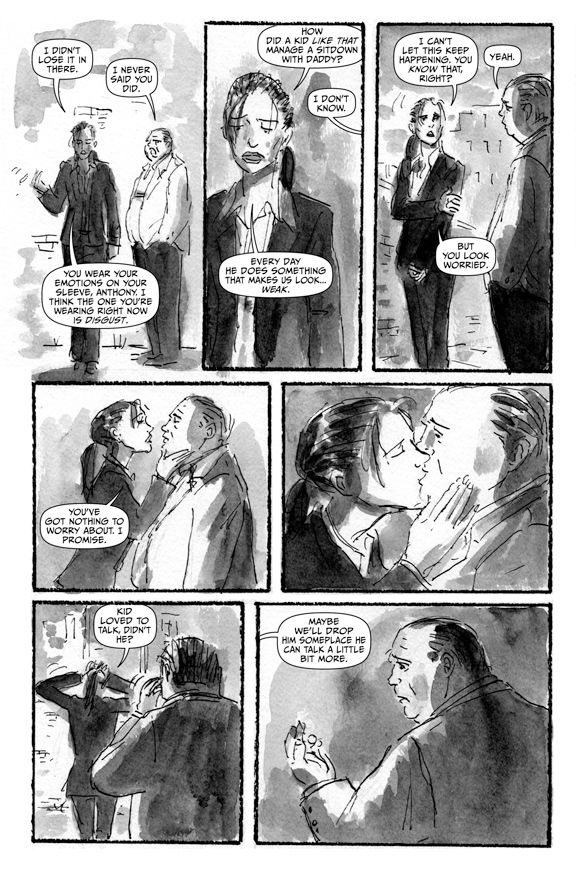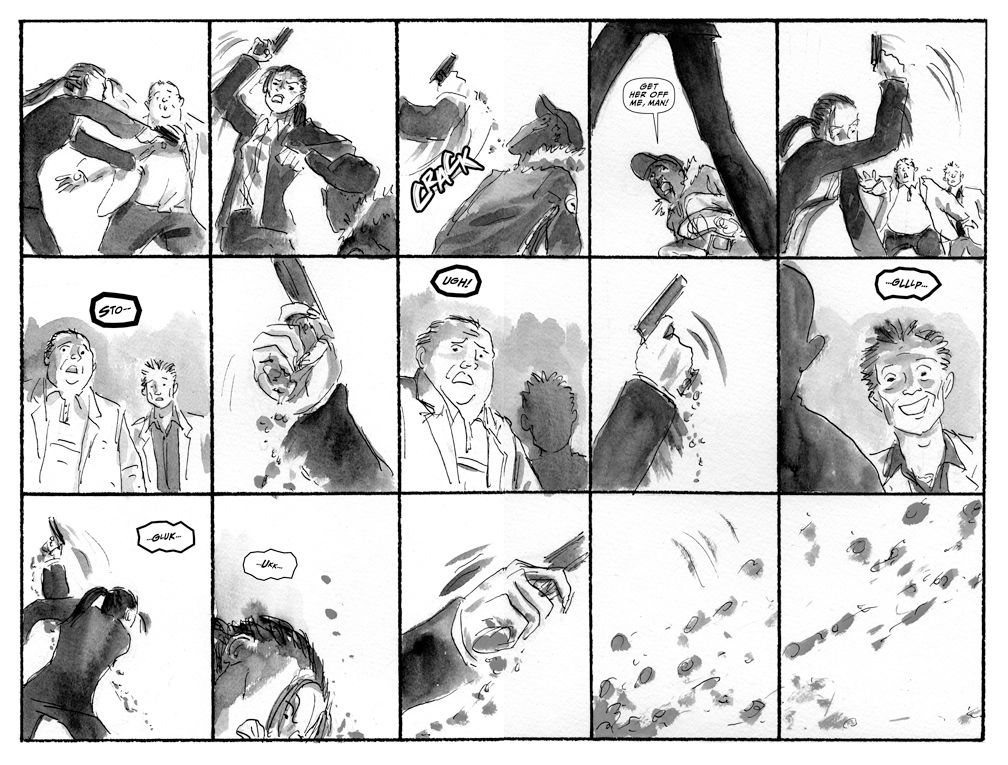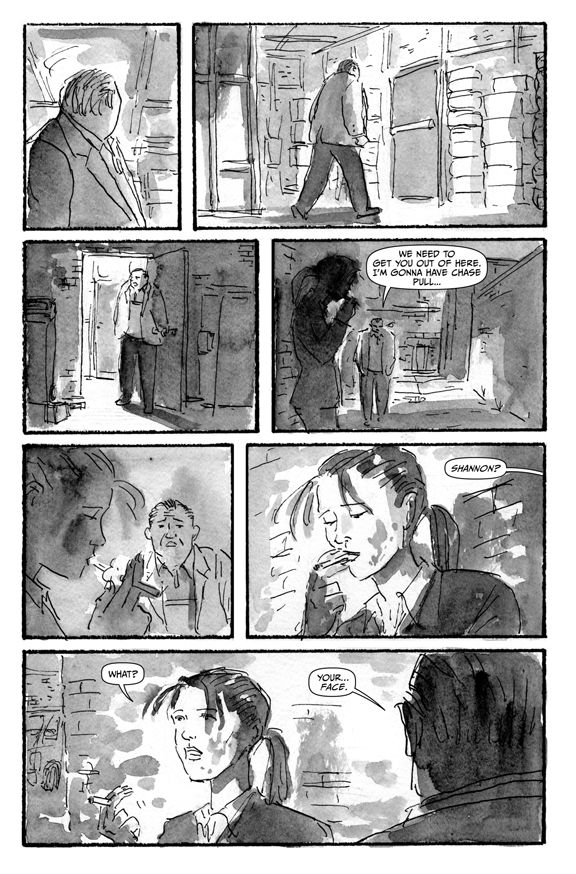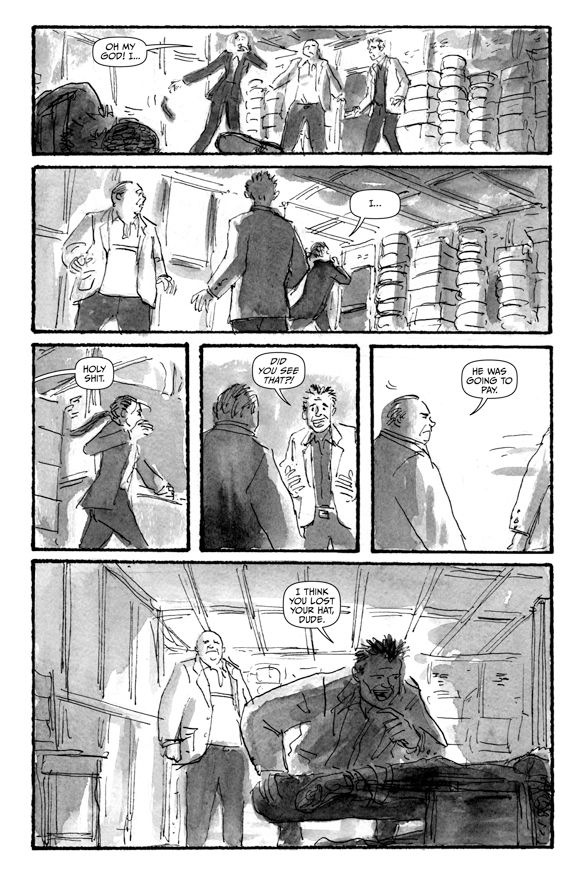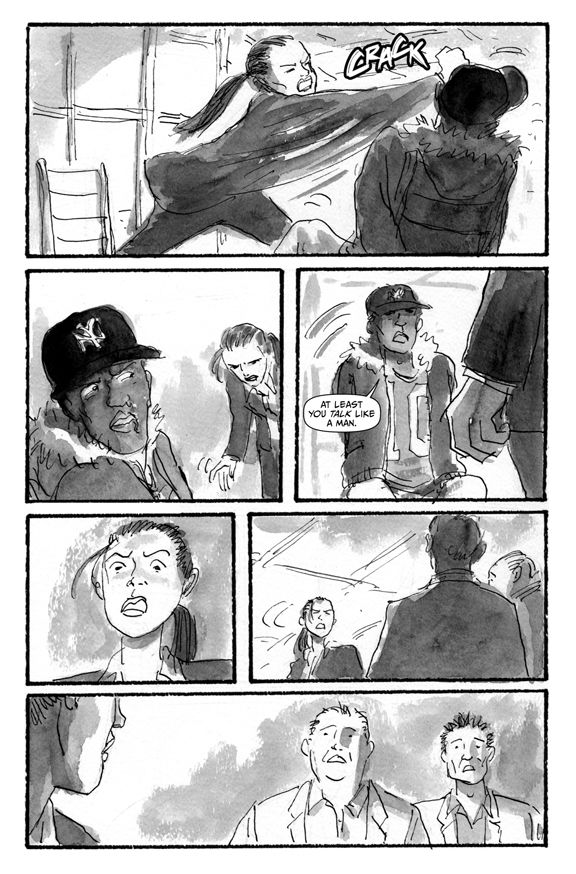Writer Eric Hobbs and artist Noel Tuazon have worked together previously on short stories (Dark Horse's "Once Upon a Time Machine" anthology) and graphic novels (2010's "The Broadcast"). Their latest collaboration is "Family Ties," a new original graphic novel from NBM Publishing. An adaptation of Shakespeare's classic play "King Lear," "Family Ties" tells the story of an aging crime boss in Alaska whose plans for the future go awry due to the greed of his children and his own dementia.
"Family Ties" debuts this weekend at the Toronto Comics Arts Festival, which the two will be attending -- and meeting in person for the first time -- and they spoke with CBR News about the book and working together.
CBR News: This is the second graphic novel the two of you have made together, the first being "The Broadcast." What do you two like about working with each other and why did you decide to collaborate again?
Eric Hobbs: The obvious answer is that Noel makes me look good. Particularly in "The Broadcast," I can't tell you how many times he made improvements on the script when laying out a new page.
Also, Noel is so good at breathing life into his characters. He can convey emotion through a character's body language and expressiveness in a way that most artists can't. Anyone who's read my stuff knows how important that is to me.I've always got characters heaving deep sighs or grinning sarcastically or staring into the distance with this heavyhearted look on their face. Noel does that stuff better than anyone.
More than anything though, I wanted a chance to work with him again because it really felt like we were hitting our groove as a team toward the end of our work on "The Broadcast." I reached a point where I could write to his strengths, and I suspect he reached a point where he knew me well enough as a writer to understand exactly what I was hoping to accomplish in each scene. It would have been silly to just go our separate ways after working to build such a good chemistry together like that.
Noel Tuazon: Main reason for me is that I enjoy reading Eric's stories. I feel lucky to have worked with writers like Eric and Joshua Hale Fialkov whose scripts have never bored me or felt bogged down with too much dialogue.
RELATED: Joshua Hale Fialkov on "Tumor"
Where did "Family Ties" begin for you?
Hobbs: I'm not exactly sure. "Family Ties" is an adaptation of "King Lear," and I think we covered "Lear" in my AP Lit class in high school. Although,I had something of an "attendance problem" my senior year of high school so there's a really good chance I didn't read it back then.Regardless, I remember reading it later in life and thinking it would make for a cool re-imagining. At one point, I thought it would make for an interesting superhero comic: a family of super-powered siblings fighting over their father's empire. I think that could have worked, but it also felt really close to the work Jay Faerber was doing in "Noble Causes" so I tabled the idea for a bit. A few years later, Noel and I were discussing a possible follow up to "The Broadcast." There were a lot of great crime books coming out at the time, and I wanted to contribute something to that. One thing led to another and here we are.
Were you always conscious of "King Lear" writing the book? Talk a little about the changes you made to the play?
Hobbs: Definitely! I had a highlighted copy of the play on my desk the whole time I was working on the script. (I wimped out and bought the No Fear Shakespeare edition.)
As for changes: while it is definitely a re-imagining of the original play, it's also a pretty faithful adaptation. You have to be careful when adapting one of the greatest writers of all time. This is my second graphic novel and he's, well -- he's William Shakespeare. I was very sure to let his story take the lead.
Now, that isn't to say there aren't changes. Alot of the play revolves around who has control over the kingdom's military forces. In "Family Ties," those knights just became soldiers within the criminal organization. So that was easy. And there were a few changes to help bring Lear into the real world.For instance, a forged letter is a pretty big plot point in the play. That becomes a text message in "Family Ties." There are a couple plot points that changed too, but I suspect most people will find it to be a pretty straight forward re-telling of the original story.
Noel, talk about your process and how you like to work.
Tuazon: Sure thing. I usually like to read over the script first, then on a second reading I start to sketch out the visuals right on the printed script itself or a sketchbook. From there I sketch out each page (on 8.5" x 11" sheets rather than thumbnails) and, when I have a good batch, I'll scan those pages and send them over to Eric. I'll admit though that with "Family Ties" I worked out the visuals right on the good paper in pencil then sent out those scans for Eric's approval before tackling the inking and watercolors.
Why did you decide to set the book in Alaska and how key is the setting for you?
Hobbs: I think the setting is key in all crime stories. It's hard to think about a great crime story where the setting doesn't feel like a character in the story. Think about "The Sopranos." Can you imagine that story unfolding anywhere but Jersey? And those great crime movies Ben Affleck has directed over the last few years? Do any of those work outside of Boston? One reason I love watching "Justified" is because I always feel like I just spent an hour in Kentucky. Hopefully, that's what will happen as you read "Family Ties." Hopefully you'll put the book down and feel like the bookcouldn't have taken place anywhere else. Hopefully you'll feel like you've been there. That's the plan, at least.
Was there a lot of research involved with getting the setting right?
Tuazon: Not as much as "The Broadcast" but I still had to check on the scenes involving the golf course & ritzy areas of Alaska along with the state's airport and convention center (casino scene). And, of course, the usual props like vehicles and weapons.
It's a great crime book but it really is a family story and it's the story of aging parents, fighting over inheritance and senility and what that means. Were these concerns and issues at the center of the book for you?
Hobbs: Oh yeah! For sure! It's fun writing car chases and gun fights. I love that stuff. But for me, I get the most enjoyment when writing characters that feel real; like people you actually know.
It's strange, too. Most the stuff I write comes from my own experience. "The Broadcast" is a perfect example of that. But when we started "Family Ties," I hadn't faced struggles like the ones the Giovannis face in this book. Well, Noel was about halfway done when my wife and I were heartbroken to learn we had someone in the family who was struggling with dementia. So, all of the sudden, it was something I was facing on a day-to-day basis in my life. When that happened, I think it became even more important for me to portray those moments as accurately as I possibly could. A lot of people face this stuff everyday, and it becomes a thousand times harder when the family can't work together to care for the parent they love.
I kept thinking how he's getting old, going senile and wants to lay out how things will go after he dies, that back in the old days when things were wild, he never could have done this. Part of Alaska getting civilized -- which he laments -- means that he can do this.
Hobbs: You're probably right. There's this great book called "Johnny's Girl" about the crime scene in Alaska during the 1960s. When you read it, it really does feel like the Wild West.
The truth is, even if Jackie wasn't going senile, he would still struggle to adapt to this new, civilized world. That's what's interesting about it. His daughters have helped him to bring his crime organization into the 21st Century -- and now that they've done that, they want it all for themselves.
How do the two of you work together?
Hobbs: It's funny, we're about to meet for the first time when the book debuts at TCAF in May. We've never met in person. We've never even talked on the phone. But we have sent a ton of e-mails back and forth. I suspect about a quarter of the e-mails I have saved in my inbox are from Noel.
Tuazon: Like Eric said, we've only communicated via e-mails and it's been the same with three other U.S.-based writers I've collaborated with.
What do you like about your publisher, NBM?
Hobbs: For starters, Terry [Nantier] was the first person who saw enough potential in my writing to take a chance on me so I always feel a certain allegiance to NBM. But it's also a great home for a lot of the stuff I write as they let us tell these stories the way we want to tell them. "Family Ties" and "The Broadcast" wouldn't work as monthly comics. There aren't too many publishers that would let us go straight to graphic novel the way that NBM has.
"Family Ties" is available now from NBM Publishing.

